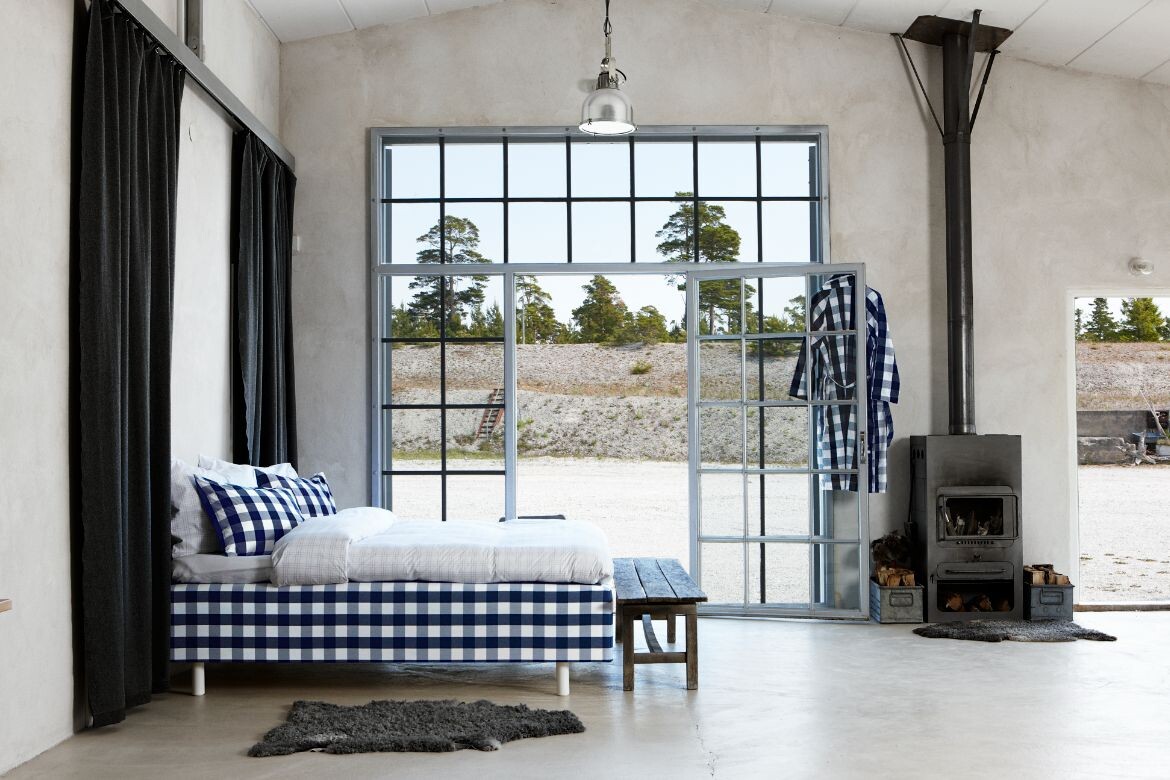As the kitchen is the heart of the home and the bathroom a place of respite, it is the bedroom that becomes our sanctuary. But how often can we say that we have enjoyed a whole night’s uninterrupted sleep?
Having travelled to Stockholm, Sweden to sleep on a bed, there was no disappointment, as there is so much to recommend a Hästens bed, that the experience becomes a life and sleep changing experience.
While a Hästens bed is expensive, very expensive, each is handmade by artisans and, in some cases, takes months to complete. For some models there is a six-month waiting list and months of back orders for all, but as the pinnacle of ‘sleep making’, a Hästens is worth the wait.
Hästens as a company was founded some 170 years ago in 1852 and was created by a man of vision. As a Master Saddler ordained by the King of Sweden, Pehr Adolf made saddles and beds, as was the custom of the day. Now in 2023, Jan Ryde is at the helm of the company and through his determination and vision he has made it a global juggernaut.
As the fifth generation of this family-run business, Jan Ryde is a passionate man – about life, his company and his beds. His journey to the top job is a love story, as initially he did not want to join the family business. However, he fell in love with a girl working on the factory floor and this brought him back to the fold. They married and he then put his mind to developing the Hästens brand and changing the fortunes of a company that was, at this time, languishing.
The hallmark of a Hästens bed is the blue and white check covering introduced by Jan Ryde’s father, Jack Ryde in 1978. While this bold pattern was not embraced initially, Ryde persisted and now the check is beloved as the signature of the brand.
With a manufacturing factory in Köping (pronounced Sherping), a small town an hour and a half from Stockholm, Ryde has infused his workforce and research team with his ambitions for making the best beds and, in doing so, established a world-wide reputation for excellence.
While the outer covering of the mattress and frame are striking, the real innovation is inside where layers of horsehair provide breathable support. Each strand of curled horsehair acts as a tiny spring working in tandem with the internal spring system, and as horsehair is a hollow strand, it acts as a ventilation system that channels away moisture and allows in fresh air. This means that moisture is not retained and a better night’s sleep is assured. Of course, the process for treating the horsehair is a secret but it is this that makes all the difference.
While horsehair is imperative to a Hästens bed, other natural materials such as cotton, wool, flax and pine are included. There are also various spring systems that are perfectly placed in combination, quantity, height and dimension, depending on the model.
As each bed is made by hand, the artisan is integral to the making process. The factory floor is a serene place where makers take their time to achieve best results and it is quality not so much the quantity of product produced that really matters.
There are 12 styles of beds and they range in price up to $900,000 for the top-of-the-line, the Grand Vividus. This is the pièce de résistance of beds and is customised in every respect. Included are precious materials such as dried stingray skin from Indonesia, nubuck and leather from France dyed in Italy, rifle buttons from Germany, furniture nails from Sweden and a special plaque from Estonia. While not everyone can afford a Grand Vividus, prospective buyers are urged to try each model, to return to the showrooms multiple times, to find just the correct bed for them.
Jan Ryde has turned the fortunes of this family-owned company around and today Hästens is available in 45 countries throughout Europe, Asia and America. And now it’s Australia’s turn as this year Hästens has arrived in Australia, through Great Dane, and a good night’s sleep is now assured.
While these beds are expensive it’s worth reflecting on Ryde’s thoughts, that we spend large amounts of money on our cars but that we spend more time in our beds. Investing in sleep pays dividends for health and wellness and a Hästens product is at the ready.
So, it’s worth touching, seeing and feeling a Hästens bed. It has been said that many have laid down on one only to fall asleep in eight minutes. Who’s counting? Not me. Having donned the pyjamas and slipped beneath the doona on a Hästens bed, I truly don’t recall falling asleep and, perhaps, that says it all.
Hästens
greatdanefurniture.com/hastens

